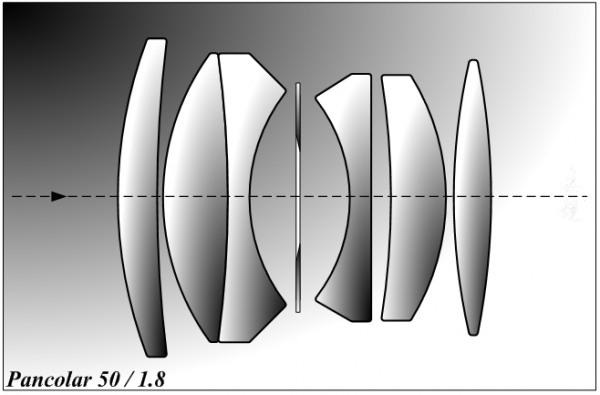
Pancolar is the brand of the VEB Carl Zeiss Jena lens line.
The Pancolar 50mm f/1.8 was a late development of Carl Zeiss Jena when the East German part of the original company was split into two companies due to World War II. Therefore, this lens can be used mainly in East Germany.
The lens has a reputation as a sharp, fast standard lens, and is quite expensive among other lenses of its time. It has an M42 mount and is produced in automatic and electronic form.


Note: The lens of the Zebra version uses thorium dioxide to pay attention to environmental protection. Carl Zeiss Jena Pancolar 50mm f1.8 “Zebra” (1964-67, up to serial number 8552600)
The pancolar belongs to a large group of modern lenses based on the basic Gaussian doublet design. This type of lens is made for normal and short focal lengths and has a great reputation for its image quality.
Pancolar can be understood as a modification of the plane. However, its structure is asymmetric compared to the plane. Carl Zeiss Jena Pancolar 1.8/50 (from 1965) and Pancolar 2/50 (1962-1965) consisted of 6 lenses in 5 groups. A special feature compared to other contemporary lenses is the narrow focal length of 35 cm. Optical design modified for the brightest variants Pancolar 1.4/55 (for Pentacon Super, 1967-1972) and Prakticar 1.4/50 (for Praktica bayonet, 2 variants, 1978-1990), both by 7 shots form 6 groups. The Pancolar 1.4/75, also shown at Pentacon Super, has a different construction – 7 lenses in 7 groups.

Von Tamasflex – Eigenes Werk, CC BY-SA 3.0, https://commons.wikimedia.org/w/index.php?curid=11794546
Pancolar 50mm f/1.8 Pros:
Build quality is very good
good bokeh effect
sharp when stopped
Pancolar 50mm f/1.8 Cons:
Lenses with Zebra versions may appear yellowish (due to thorium dioxide)
sample
The sample is from Marcus Li, a film photography enthusiast, c200 film + sp3000 scanning and shooting. Sample copyright belongs to the original author












镜头测试及样片1609864929--300x146.jpg?v=1733106209)



